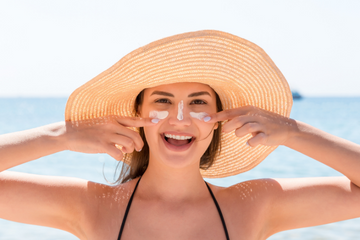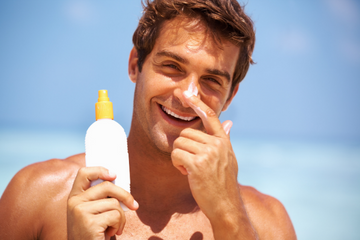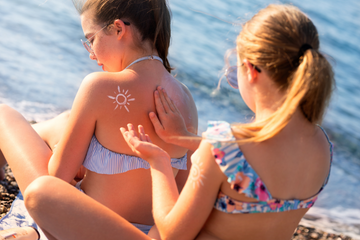
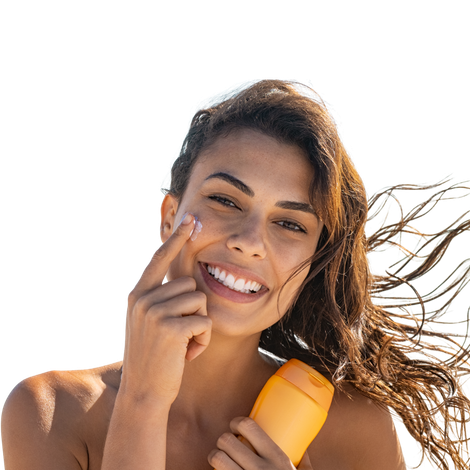
Health, Skin and Sunscreen Awareness
Skin cancer is one of the most common types of cancer worldwide, affecting millions of people each year. While anyone can develop skin cancer, certain factors increase the risk significantly. Understanding who is most vulnerable can help individuals take proactive steps to protect themselves and detect skin cancer early when it is most treatable.
Protect yourself and your family this summer!
Days until next Summer - be prepared.
Understanding the Importance of Skin Cancer Prevention
Skin cancer is one of the most widespread and preventable forms of cancer across the globe.
Every year, millions of people are diagnosed with different types of skin cancer, including basal cell carcinoma, squamous cell carcinoma, and the deadliest form, melanoma.
The good news!
A large percentage of skin cancer cases can be prevented by adopting proactive habits and making smart lifestyle choices. By taking steps to protect your skin from harmful ultraviolet (UV) radiation and staying informed about risk factors, you can significantly lower your chances of developing skin cancer while maintaining the health and vitality of your skin.
Protect Your Skin
5 Essential Steps to Prevent Skin Cancer
Step 1: Understand the Risk Factors
Knowledge is power when it comes to preventing skin cancer.
Understanding the key risk factors that contribute to its development is the first step toward protection.
Common Risk Factors for Skin Cancer:
- Excessive Sun Exposure: Long-term and unprotected exposure to UV radiation, particularly during peak sunlight hours (10 a.m. to 4 p.m.), significantly increases your risk of skin cancer.
- Fair Skin & Light Features: People with fair skin, blonde or red hair, and light-coloured eyes have less melanin, making them more susceptible to UV damage.
- History of Sunburns: Repeated sunburns, especially during childhood and adolescence, can lead to cellular damage that increases the likelihood of skin cancer later in life.
- Family History: A genetic predisposition to skin cancer can raise your risk, especially if close relatives have been diagnosed with melanoma or other forms of skin cancer.
- Frequent Tanning: Whether from the sun or tanning beds, exposing your skin to UV rays for cosmetic purposes is a major risk factor for skin cancer.
By identifying these risks, you can take appropriate measures to minimize exposure and protect your skin.
Step 2: Practice Effective Sun Protection
Shielding your skin from harmful UV rays is one of the most effective ways to reduce the risk of skin cancer.
Here are some essential sun safety strategies:
Sun Protection Habits to Adopt:
- Seek Shade: Limit direct sun exposure, especially during peak hours when the sun’s rays are the strongest.
- Wear Protective Clothing: Opt for lightweight, long-sleeved shirts, pants, and wide-brimmed hats to cover your skin and block UV rays.
- Apply Sunscreen Daily: Use a broad-spectrum sunscreen with an SPF of 50 or higher to protect against both UVA and UVB rays. Apply generously to all exposed skin and reapply every two hours, or more frequently if swimming or sweating.
- Protect Your Eyes: Wear UV-blocking sunglasses to shield your eyes and the delicate skin around them from sun damage.
- Be Cautious Near Reflective Surfaces: Sand, water, and snow can intensify UV exposure by reflecting sunlight onto your skin.
By incorporating these simple habits into your daily routine, you can significantly reduce your risk of sun-related skin damage.
Step 3: Perform Regular Skin Self-Examinations
Early detection is key when it comes to skin cancer. Performing routine self-examinations can help identify suspicious skin changes before they develop into more serious conditions.
How to Conduct a Skin Self-Exam:
- Examine Your Entire Body: Check all areas of your skin, including your scalp, the soles of your feet, under your nails, and even hard-to-see places like your back.
- Look for Changes: Pay attention to any new moles, unusual growths, or alterations in existing moles (size, shape, colour, or texture).
- Use Mirrors or Ask for Help: Use a hand mirror to inspect difficult-to-see areas, or ask a partner or family member to assist you.
- Follow the ABCDE Rule: Watch for signs of skin cancer by evaluating moles using the ABCDE method:
- Asymmetry – One half looks different from the other.
- Border – Irregular, jagged, or blurred edges.
- Colour – Multiple shades of brown, black, red, or blue.
- Diameter – Larger than 6mm (size of a pencil eraser).
- Evolving – Changes in size, shape, or symptoms like itching or bleeding.
- See a Dermatologist: If you notice any unusual changes, schedule a professional skin examination with a dermatologist for further evaluation.
By staying vigilant, you can catch potential skin cancer at its earliest, most treatable stage.
Step 4: Say No to Tanning – Indoor & Outdoor
Tanning—whether under the sun or in a tanning bed—is a leading cause of skin cancer.
Many people mistakenly believe that a “base tan” protects against sunburn, but in reality, any tan is a sign of skin damage.
Why Tanning is Dangerous:
- Tanning Beds Are Even Worse: Indoor tanning exposes you to concentrated UV radiation, significantly increasing your risk of melanoma.
- Premature Aging: UV exposure accelerates skin aging, leading to wrinkles, fine lines, and sunspots.
- DNA Damage: Tanning damages skin cells at a genetic level, increasing the risk of mutations that can lead to cancer.
Safe Alternatives to Tanning:
- Sunless Tanners: Use self-tanning lotions, sprays, or mousse products to achieve a bronzed look without UV exposure.
- Professional Spray Tans: Opt for UV-free spray tans from reputable salons.
- Embrace Your Natural Skin Tone:
Healthy skin is beautiful! Avoiding UV exposure helps maintain youthful, radiant skin.
Step 5: Adopt a Healthy Lifestyle for Skin Protection
A well-rounded, healthy lifestyle not only improves your overall well-being but also plays a role in reducing the risk of skin cancer.
Key Lifestyle Habits for Skin Health:
- Quit Smoking: Smoking has been linked to increased skin cancer risks and premature aging. Quitting improves skin health and reduces cancer risk.
- Eat a Skin-Boosting Diet: Consume antioxidant-rich foods like berries, leafy greens, nuts, and omega-3 fatty acids to support skin health.
- Stay Hydrated: Drinking plenty of water keeps your skin hydrated, helping it repair and regenerate more effectively.
- Be Cautious with Medications: Some medications, including certain antibiotics and acne treatments, can increase your skin’s sensitivity to the sun. Always consult your doctor about sun safety precautions if you take these medications.
- Maintain a Healthy Weight & Exercise Regularly: Keeping active boosts circulation and strengthens the immune system, which helps your body combat skin damage and repair itself more efficiently.
Preventing skin cancer requires a proactive approach to sun safety and skin care.
By understanding your risk factors, practicing daily sun protection, avoiding tanning, performing regular skin self-checks, and leading a healthy lifestyle, you can significantly lower your risk of developing skin cancer.
Remember, your skin is your first line of defense against external threats—take care of it, protect it, and prioritise its health for a lifetime of radiant, cancer-free skin.
Prevention is always better than treatment!
5 Types of Skin Cancer!
The 10 Most Asked Questions About Sunscreen
What does SPF mean, and how does it work?
SPF stands for Sun Protection Factor. It measures how well a sunscreen protects against UVB rays, which cause sunburn. For example, SPF 30 means you can stay in the sun 30 times longer than without protection before burning. However, SPF does not account for UVA protection, so look for “broad-spectrum” sunscreen.
What is the difference between UVA and UVB rays?
- UVA rays penetrate deep into the skin, causing premature aging and contributing to skin cancer.UVB rays cause sunburn and are the main culprits behind skin cancers like melanoma.A broad-spectrum sunscreen protects against both.
How often should I reapply sunscreen?
You should reapply every two hours, or more frequently if you’re sweating or swimming. Even water-resistant sunscreens lose effectiveness over time, so it’s essential to reapply to maintain protection.
Is sunscreen safe to use every day?
Yes! Daily sunscreen use helps prevent premature aging, sunburn, and skin cancer. Even on cloudy days, up to 80% of UV rays penetrate through clouds, making daily application necessary.
Does sunscreen expire?
Yes. Sunscreen typically lasts about 3 years, but you should check the expiration date. Expired sunscreen loses effectiveness and may not provide adequate protection.
What is the difference between chemical and physical (mineral) sunscreens?
- Chemical sunscreens absorb UV radiation and convert it into heat. They contain ingredients like oxybenzone and avobenzone.Physical (mineral) sunscreens use zinc oxide or titanium dioxide to reflect UV rays. These are often recommended for sensitive skin and are reef-safe.
Can I wear sunscreen under makeup?
Yes! Apply sunscreen first, let it absorb, and then apply makeup. If you need to reapply during the day, consider powder or spray sunscreens that won’t smudge makeup.
Is sunscreen safe for babies and children?
- Babies under 6 months: Avoid direct sun exposure and use protective clothing instead of sunscreen.Babies over 6 months: Use broad-spectrum, mineral-based sunscreen (zinc oxide or titanium dioxide) since it’s less likely to irritate their skin.
Can I get enough vitamin D if I wear sunscreen?
Yes, you can still get vitamin D while wearing sunscreen. No sunscreen blocks 100% of UV rays, and small amounts of exposure, plus a balanced diet, should provide enough vitamin D. If concerned, consult your doctor about supplements.
Does a higher SPF provide significantly better protection?
Not necessarily.
Skin cancer represents a major public health issue, affecting millions of people worldwide.
It's a condition where malignant cells form in the tissues of the skin, and it's primarily categorised into three main types: basal cell carcinoma, squamous cell carcinoma, and melanoma.
While it's more prevalent in older adults due to cumulative sun exposure over time, younger adults, and in rare cases, children, are not immune to it. Understanding the risk factors and the biology behind skin cancer can help in its prevention, early detection, and treatment.
Age and Skin Cancer
Older adults are indeed at higher risk for developing skin cancer, as the risk increases with age. This is attributed to the accumulation of UV radiation exposure over the years. However, younger adults and even children can develop skin cancer, especially if they have significant sun exposure without adequate protection, use tanning beds, or have a predisposition due to genetic factors.
Skin Type and Risk
The Fitzpatrick skin phototype system classifies skin by its colour and its reaction to sun exposure, ranging from I (always burns, never tans) to VI (never burns, always tans). Types I, II, and III, which generally include fair-skinned individuals, are at a heightened risk for skin cancer due to lower levels of melanin. Melanin acts as a natural sunscreen by absorbing and dissipating UV rays. However, it's a common misconception that individuals with darker skin are immune to skin cancer. While the incidence rates are lower, when skin cancer does occur in darker skin types, it can be more deadly, often because of late detection.
Genetic Factors and Family History
The role of genetics in skin cancer cannot be overstated. Individuals who have a family history of skin cancer are at a higher risk, suggesting a genetic predisposition to developing the disease. Certain genes, like the melanocortin-1 receptor (MC1R), play a significant role in determining skin pigmentation and are linked to an increased risk of skin cancer. Mutations in this gene can lead to reduced melanin production and increased susceptibility to UV radiation damage.
Previous Skin Cancer
Having had one instance of skin cancer significantly raises the likelihood of developing another, partly because the same risk factors (like sun exposure and genetic predisposition) are often still present. This underscores the importance of regular skin checks and monitoring for individuals with a history of the disease.
Preventive Measures and Early Detection
Given these risk factors, preventive measures such as avoiding excessive sun exposure, using sunscreen, wearing protective clothing, and avoiding tanning beds are crucial. Early detection through regular skin examinations by a healthcare professional and self-examinations can significantly improve outcomes, as most skin cancers are treatable when caught early.
While certain factors like age, skin type, genetics, and family history increase the risk of skin cancer, it's crucial to remember that skin cancer can affect anyone. Awareness, preventive measures, and early detection are key components in reducing the impact of skin cancer across all demographics.


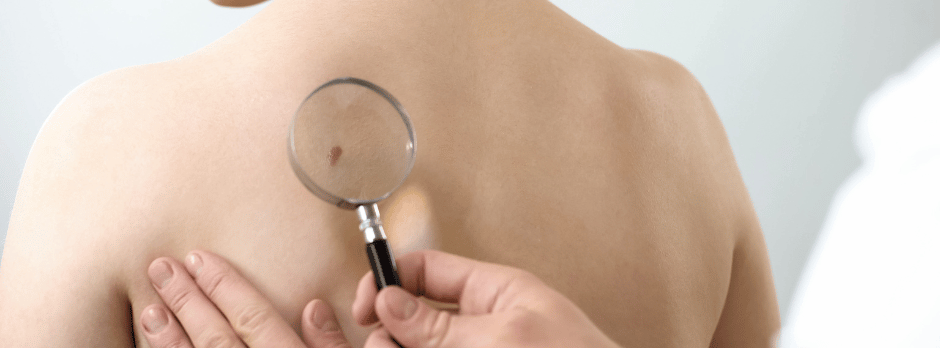
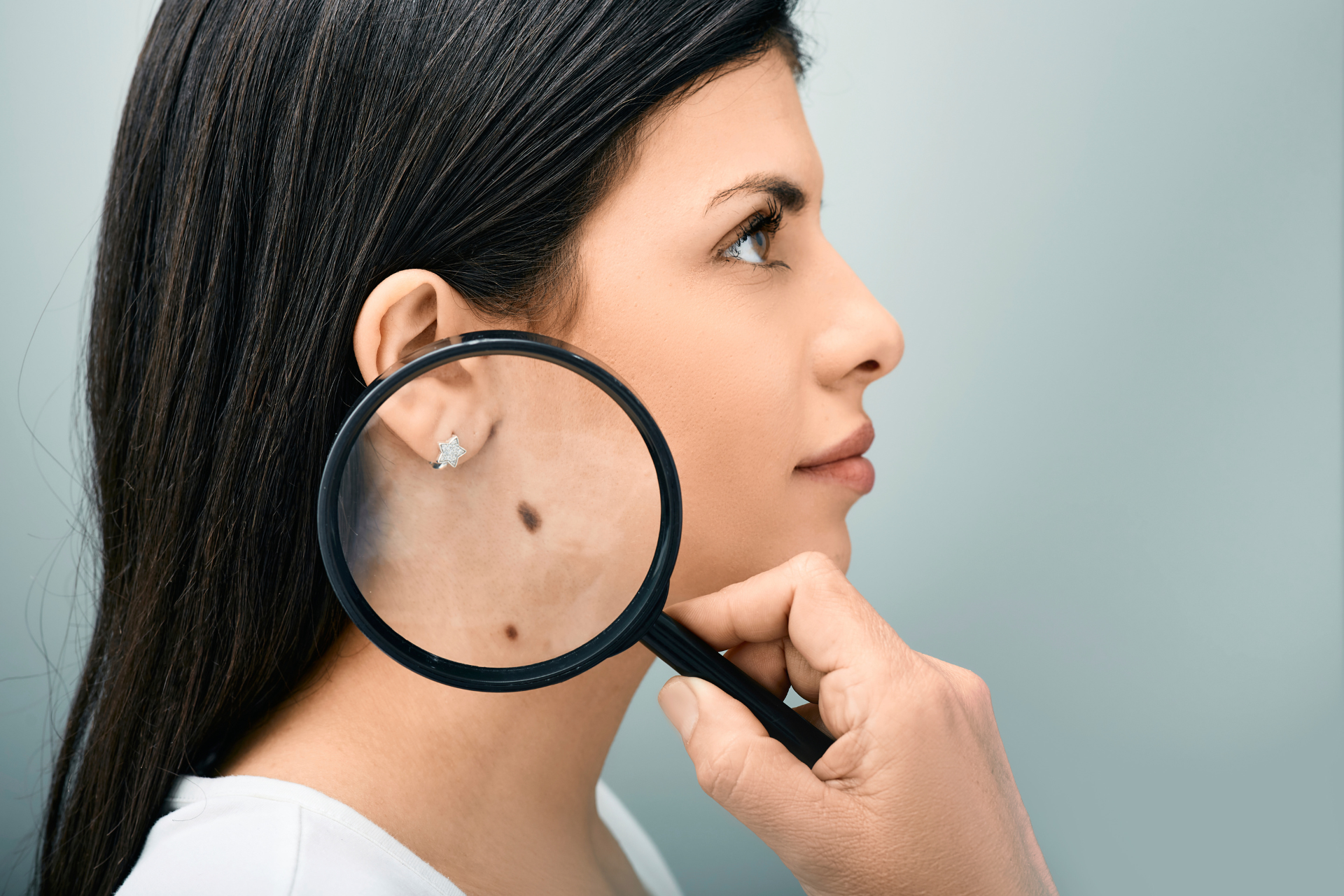
4 Easy Health and Fitness Tips to Reduce your Risk of Skin Cancer.
In short, we all need to be healthy and fit.
We each have our own reasons from looking good naked to being around for the kids, maybe the doctor ordered us too.
Obesity is the leading cause of death in Australia and most of the Western world.
All too often we fail to think about what we are doing to ourselves and our families. So do it for them as well as yourself.
If you need help, find a workout partner or get a fitness trainer. Look online, you will find they aren't all that expensive and can help motivate and guide you to you health and fitness goals.
Australia has seen an enormous increase in the number of people considered obese by the medical community. In fact many call it an obesity epidemic. To combat this, we find all sorts of pharamceutical companies selling the "quick fix" pills, powders, and lotions that do nothing to actually help people take the fat off and keep it off.
Of course the same could be said of the diet industry as well. There are so many different diets going around now you could pick one a month and in a years time still have more to choose from.
What is truely needed are some sensible proven weight loss tips that people can implement no matter what their current physical condition is.
That said, let's look at a couple.
Drink more water.
All too often Australians are borderline dehydrated and so their bodies are working on the water starvation reflex and not flushing the toxins and junk out.
Eat more often.
I bet you thought I was going to say eat less. While it is true that to lose weight you need to eat less calories than you expend...you need to eat more often to get the metabolic furnace fired up and burning right. Get it out of starvation mode. So start the day off with breakfast. Even an instant breakfast drink and a piece of fruit as you head out the door in the morning is good.
Move more.
Depending on your physical condition, you need to be moving more. Use the stairs rather than the elevator, park further out from the office or the shops, go for a walk around the block, go dancing, play with your kids. Make it fun. Running is not the only way to burn more calouries.
Finally, determine your "Why".
Decide why you want to discard fat. Make your reason big enough to motivate you through the slumps that invariably happen.
Personally my reason was to be able to live to see my great grandkids graduate.
My youngest kids are 4 and 6 now and I want to get out and play with them without being out of breath all the time.
Most Skin Cancer Is Preventable
Nearly all skin cancers are directly related to your exposure to ultraviolet (UV) radiation; this means, that when you protect your skin from the sun’s UV radiation you reduce your risk.
The good news is it’s also never too late to start!
Every day you protect your skin, you reduce your risk.
The UV Index
The World Health Organization's Global Solar UV Index measures UV levels on a scale from 0 (Low) to 11+ (Extreme).
Sun protection is recommended when UV levels are 3 (Moderate) or higher.
The UV level is affected by a number of factors including the time of day, time of year, cloud cover, altitude, location and surrounding surfaces.
UV radiation is classified into three different levels based on its wavelength and energy:
- UVA (320-400 nm): This is the longest wavelength of UV radiation and the least harmful to living organisms. It penetrates deeply into the skin and can cause premature skin aging and wrinkling.
- UVB (280-320 nm): This is a shorter wavelength than UVA and is more energetic. It causes sunburn and is the main cause of skin cancer. UVB radiation does not penetrate as deeply into the skin as UVA.
- UVC (100-280 nm): This is the shortest wavelength of UV radiation and the most energetic. However, it is mostly absorbed by the Earth's ozone layer and does not reach the Earth's surface in significant amounts.
It is important to protect your skin from both UVA and UVB radiation by wearing protective clothing, applying sunscreen with a high SPF, and avoiding prolonged exposure to the sun during peak hours.
What Does SPF 50 Mean?
Sun Protection Factor (SPF) is a critical indicator for assessing a sunscreen's effectiveness in guarding the skin against the damaging effects of ultraviolet (UV) rays.
Understanding SPF can help you make informed choices about you sun protection strategies, combining the use of sunscreen with other protective measures to minimise your risk of sunburn and skin cancer.
Understanding SPF and UV Rays
SPF measures a sunscreen's ability to protect the skin from UVB rays, the primary wavelength that causes sunburn and can lead to skin cancer. UVA rays, while less intense, penetrate the skin more deeply and are associated with premature skin aging and some types of skin cancers. Most broad-spectrum sunscreens aim to protect against both UVA and UVB rays.
The SPF rating is a theoretical estimate of the amount of UV radiation required to cause sunburn on skin with the sunscreen applied, compared to the amount required without protection. For instance, an SPF 50 sunscreen is designed to allow a person to be exposed to 50 times more UVB radiation before getting sunburned than they would without protection.
Limitations of SPF
While SPF ratings provide a guide to a sunscreen's effectiveness, there are several important caveats to consider:
- Reapplication: Sunscreen needs to be reapplied every two hours, or more frequently if swimming or sweating, as its effectiveness diminishes over time.
- Quantity: The SPF rating is based on a specific application thickness (2 mg/cm² of skin). Most people apply less than this amount, reducing the effectiveness of the sunscreen.
- Complete Protection: No sunscreen can block 100% of UV rays. SPF 30 blocks approximately 97% of UVB rays, while SPF 50 blocks about 98%. The increase in protection becomes less significant with higher SPF values.
- Broad-Spectrum Protection: SPF primarily measures UVB protection; thus, for comprehensive protection, it's vital to use a broad-spectrum sunscreen that also protects against UVA rays.
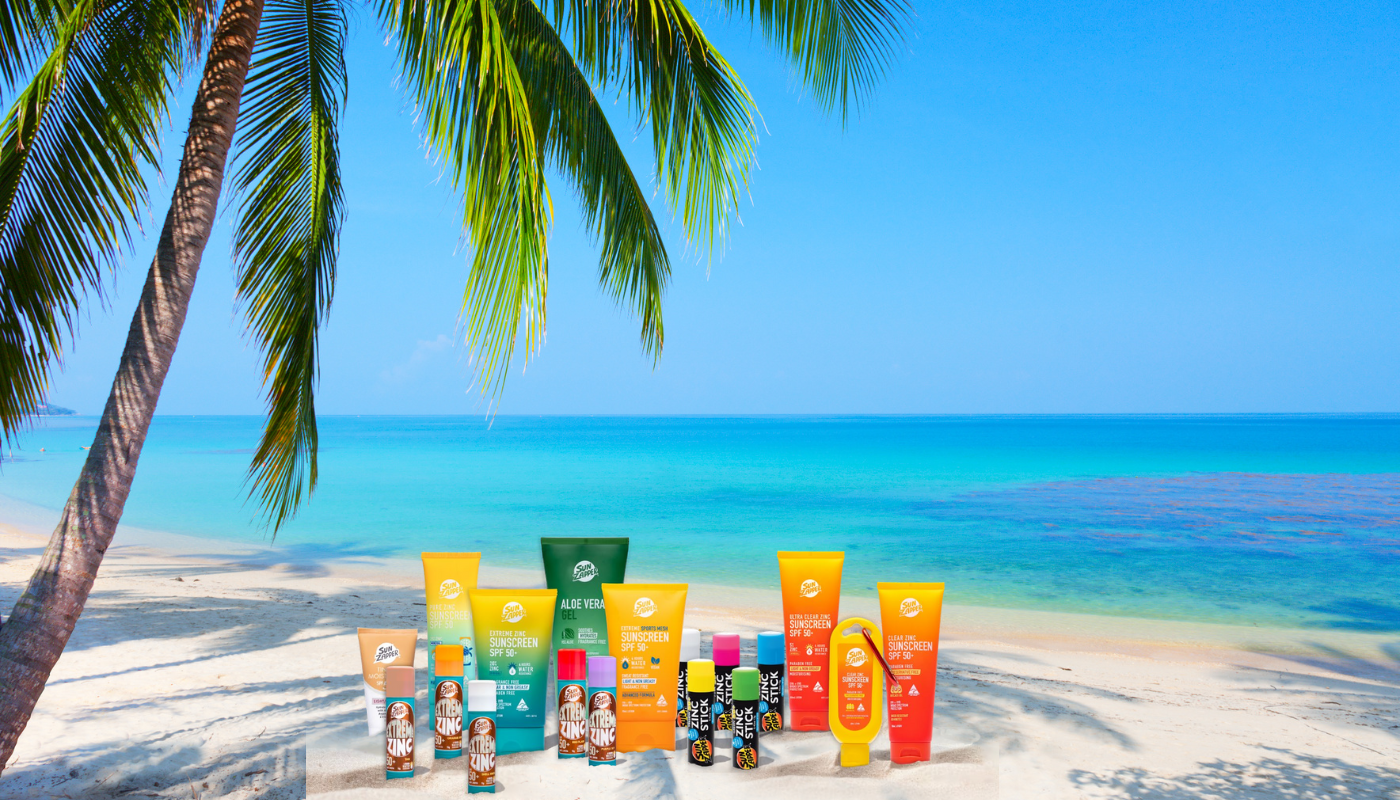
Beyond Sunscreen: Additional Protective Measures
While sunscreen is a vital tool in sun protection, it should not be relied upon as the sole method of defense against UV radiation.
Additional measures include:
- Seeking Shade: Especially during peak sun intensity hours, usually between 10 a.m. and 4 p.m.
- Wearing Protective Clothing: Including hats, sunglasses, and long-sleeved garments designed to block UV radiation.
- Avoiding Tanning Beds: Tanning beds significantly increase the risk of skin cancer and premature skin aging.
While SPF is an important factor in choosing a sunscreen, understanding its limitations is crucial for effective sun protection.
Sunscreen should be a part of a broader sun safety regimen that includes seeking shade, wearing protective clothing, and avoiding direct sun exposure during peak hours.
By adopting a comprehensive approach to sun protection, individuals can enjoy outdoor activities while minimizing their risk of sunburn and long-term skin damage.
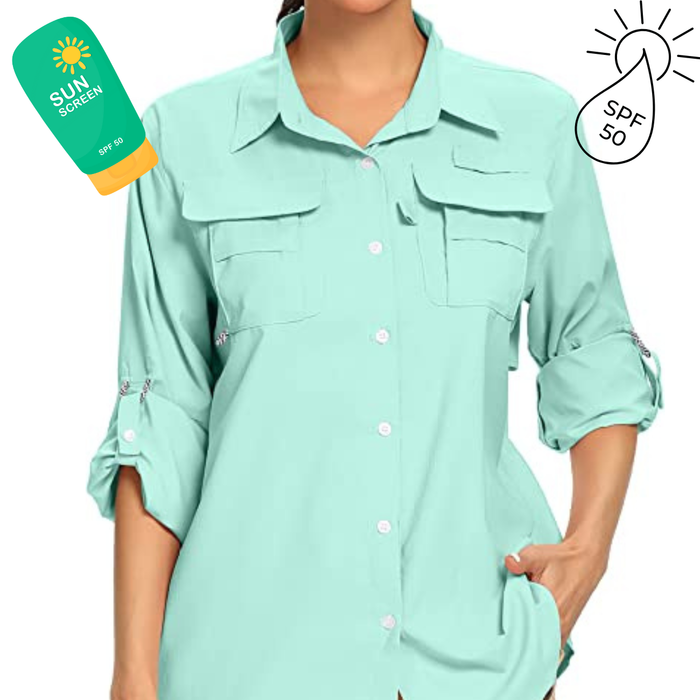
What is the best clothing to wear to protect from skin cancer?
The best clothing to wear to protect from skin cancer is clothing that provides physical sun protection and covers as much skin as possible. Here are some tips:
- Look for clothing made from tightly woven fabrics, such as cotton, polyester, or nylon, as these provide more sun protection than loosely woven fabrics.
- Choose dark or bright colours, as they absorb more UV radiation than light colours.
- Wear long-sleeved shirts and long pants or skirts that cover as much skin as possible. Look for clothing with a UPF (Ultraviolet Protection Factor) rating, which indicates how much UV radiation can penetrate the fabric.
- Wear a wide-brimmed hat to protect your face, neck, and ears from the sun.
- Wear sunglasses with UV protection to protect your eyes and the skin around them.
- Avoid wearing clothing that is wet or stretched out, as it provides less sun protection.
Remember that no clothing can provide 100% protection from the sun's harmful UV rays, so it's still important to use sunscreen and other sun protection measures, such as seeking shade and avoiding sun exposure during peak hours.
Looking After Your Skin Has Never Been More Important
How do you know if a spot is skin cancer?
The ABCDE Rule!
Identifying potential skin cancer early is crucial for effective treatment and management.
While the only definitive method to diagnose skin cancer involves professional medical evaluation, including a detailed examination and possibly a biopsy by a dermatologist or skin cancer specialist, being aware of the warning signs can help individuals seek timely medical advice.
The commonly used ABCDE criteria provide a straightforward way to evaluate skin spots for signs that may indicate skin cancer:
A for Asymmetry
Normal moles or benign lesions are usually symmetrical. If you draw a line through the middle of the spot, the two halves should roughly mirror each other. In the case of melanoma, the deadliest form of skin cancer, the spots are often asymmetrical. If one half of the spot does not match the other, it's a sign that the lesion might be cancerous.
B for Border
The edges or borders of a benign mole are typically smooth and even. Cancerous spots, on the other hand, may have irregular, notched, or scalloped borders. An uneven border is a warning sign that warrants further examination by a healthcare professional.
C for Colour
A uniform colour is typical of non-cancerous moles. They are usually a single shade of brown. A spot with varying colours — including shades of brown, black, white, red, or blue — or an uneven distribution of colour can be a sign of melanoma or another type of skin cancer.
D for Diameter
While melanomas can be small when they first develop, they often grow in size. A mole or skin lesion larger than 6 millimeters (about the size of a pencil eraser) should be examined. However, some melanomas can be smaller, so it’s important to notice any mole that is different from others or changes in size.
E for Evolution
Any change in a mole or skin lesion over time is a significant warning sign. Evolution can refer to a change in size, shape, colour, or elevation. It can also refer to a new symptom, such as bleeding, itching, or crusting.
Additional Considerations
While the ABCDE criteria are helpful for identifying suspicious spots that may be skin cancer, it's important to be aware of other signs as well. These can include sores that do not heal, the spread of pigment from the border of a spot into the surrounding skin, or redness or a new swelling beyond the border of the mole.
Early detection of skin cancer greatly increases the chances of successful treatment.
Regular self-examinations using the ABCDE criteria can be an effective way to monitor your skin for any changes that might indicate cancer. However, it's important to remember that not all skin cancers fit the ABCDE criteria, so any new or changing skin lesions should be evaluated by a professional. If you notice any concerning signs, it's essential to consult with a doctor or dermatologist as soon as possible.
Their expertise is critical for accurate diagnosis and appropriate treatment planning, ensuring the best possible outcomes for skin health.
Melanomas are notoriously difficult to discover and diagnose.
After years of education through skin cancer awareness campaigns, patients or their close relatives are, nonetheless, often the ones to sound the early alarm about a concerning lesion.
However, many patients are still surprised when the lesion they presented to the doctor, and in many cases another lesion, actually turn out to be a melanoma.
The simple fact is that there is no typical appearance of a melanoma that is easily detected by the naked eye.
Melanoma survival rates are dramatically improved if a melanoma is detected early, especially when the malignant cells are confined to the tissue of origin — called melanoma in situ or level 1 melanoma.
When melanomas are not caught early, and have invaded into the deeper layers of the skin, the survival rates drop.
For these reasons, it is recommended that any concerning lesion is presented to the appropriate physician as soon as possible.
Many suspicious skin lesions that turn out to be melanomas are initially identified by the patient, so skin self-examination can contribute to early detection.
It follows that encouraging effective skin self-examination is likely to assist in early detection of melanoma.
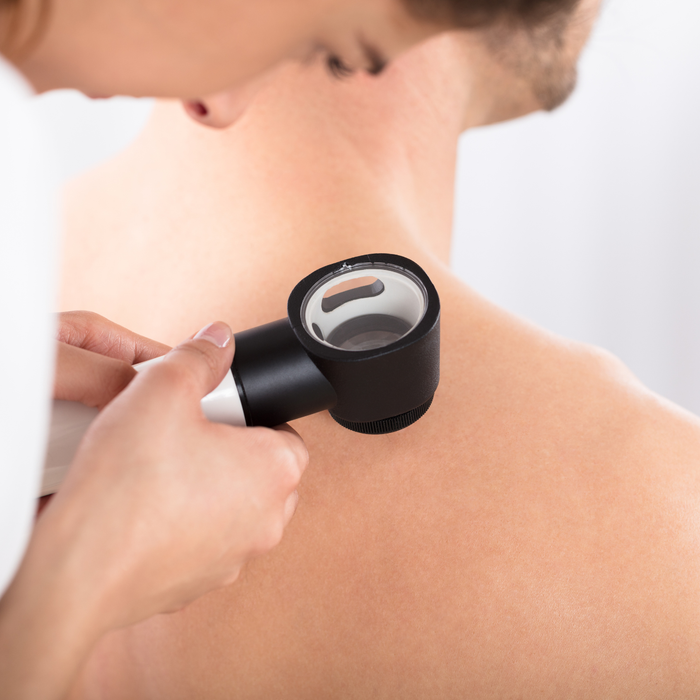
What is broad-spectrum protection?
Broad-spectrum protection refers to a type of sunscreen that is designed to protect the skin against both ultraviolet A (UVA) and ultraviolet B (UVB) rays from the sun.
UVB rays are responsible for causing sunburns and can damage the outermost layers of the skin, while UVA rays penetrate deeper into the skin and can cause long-term damage such as premature aging, skin discolouration, and wrinkles.
Both types of UV rays can also increase the risk of skin cancer.
Broad-spectrum sunscreens contain ingredients that help to absorb, scatter, or reflect both UVA and UVB rays, providing more complete protection against the harmful effects of the sun.
When choosing a sunscreen, it is important to select one that offers broad-spectrum protection to ensure that your skin is protected from both UVA and UVB rays. Look for sunscreens that are labeled "broad-spectrum" or "UVA/UVB protection".
What Does Melanoma Look Like?
Melanoma is a type of skin cancer that is caused by the growth of abnormal melanocyte cells in the skin. It is the deadliest form of skin cancer, and early detection is critical for successful treatment. One of the key factors in detecting melanoma is being able to recognize what it looks like.
Melanoma can take many different forms, but it typically appears as a new, unusual or changing mole or spot on the skin. The most common type of melanoma is superficial spreading melanoma, which starts as a flat, irregularly shaped mole with uneven color and border. Over time, it may become thicker and more raised, with different shades of brown, black, or red.
Another type of melanoma is nodular melanoma, which tends to grow more quickly and can appear as a raised, dark bump on the skin. It may be black, brown, or skin-coloured and often has a smooth or shiny surface. Unlike other types of melanoma, nodular melanoma may not have an irregular border or colour variation.
Acral lentiginous melanoma is a rare type of melanoma that occurs on the palms of the hands, soles of the feet, or under the nails. It often appears as a dark spot or streak that grows slowly and may be mistaken for a bruise or injury. This type of melanoma is more common in people with darker skin.
In addition to these types, there are also less common forms of melanoma such as lentigo maligna melanoma, which often develops in older individuals on sun-damaged skin, and desmoplastic melanoma, which is a subtype that may have a scar-like appearance.
If you notice any unusual changes in your skin, including new or changing moles, spots, or growths, it is important to see a skin specialist for evaluation. They can perform a skin examination and, if necessary, perform a biopsy to determine if the lesion is cancerous. Early detection of melanoma is critical for successful treatment and a good prognosis.
We are proud to be partnered with Hair Restoration in Scottsdale.

